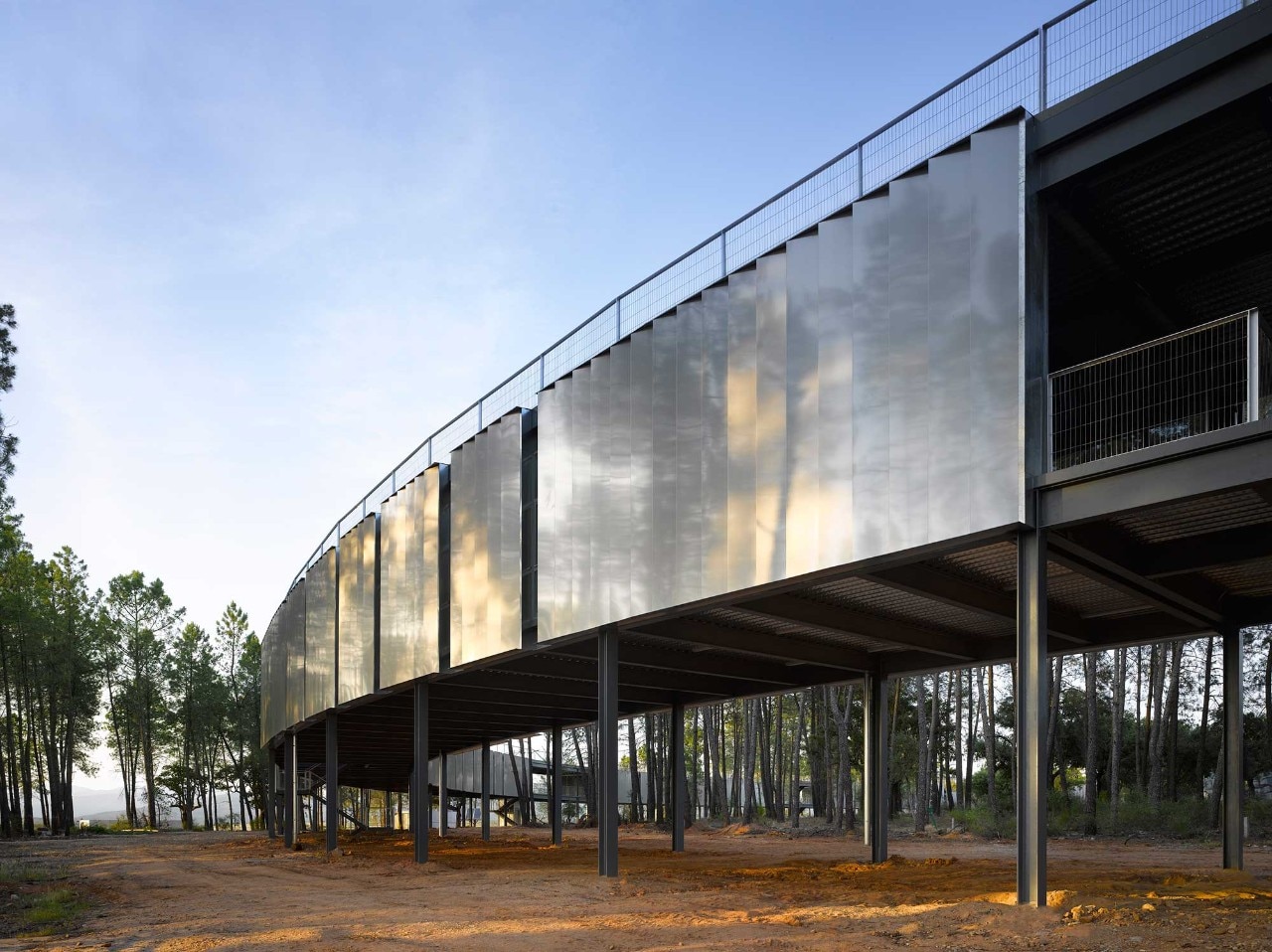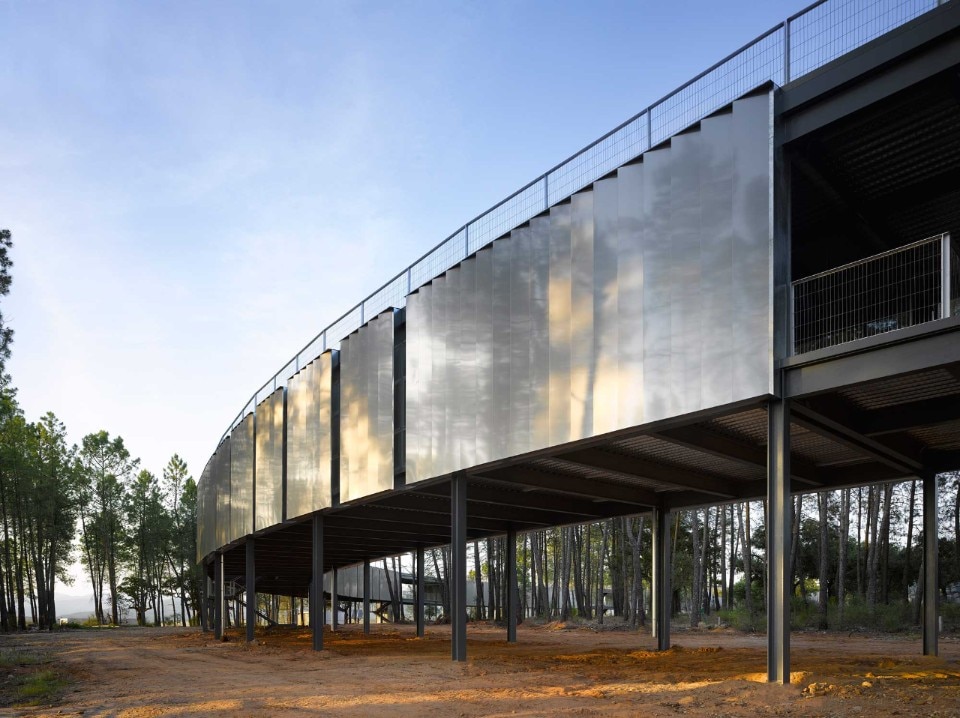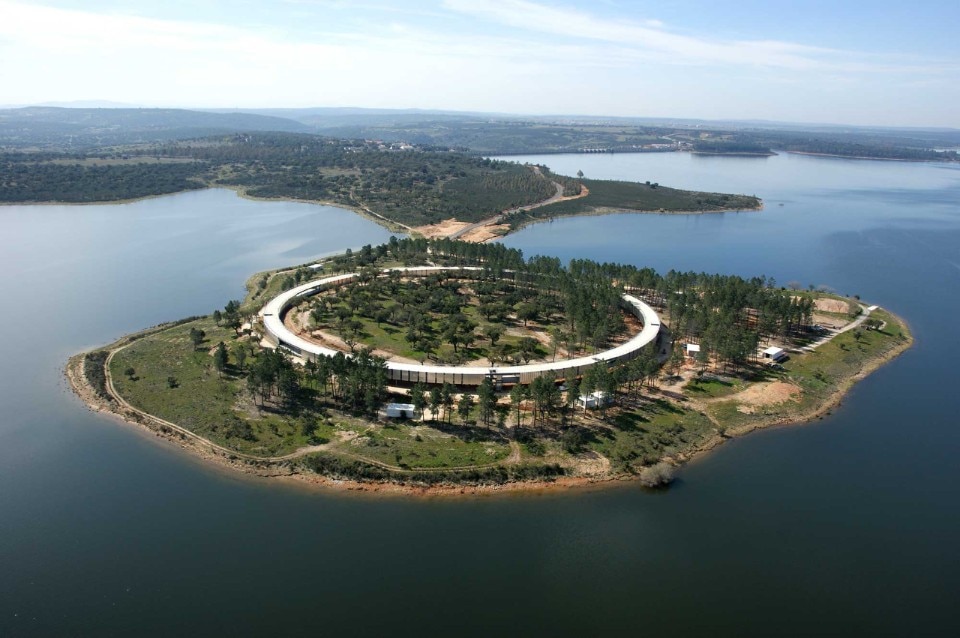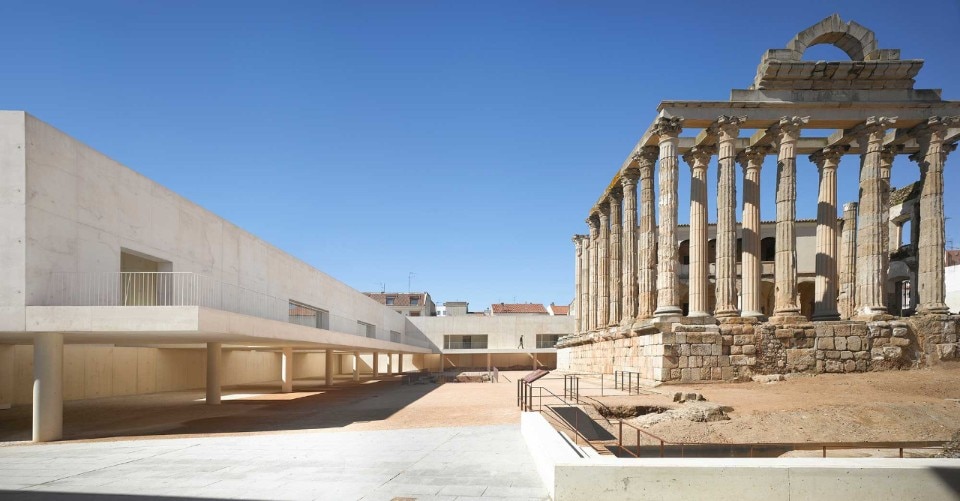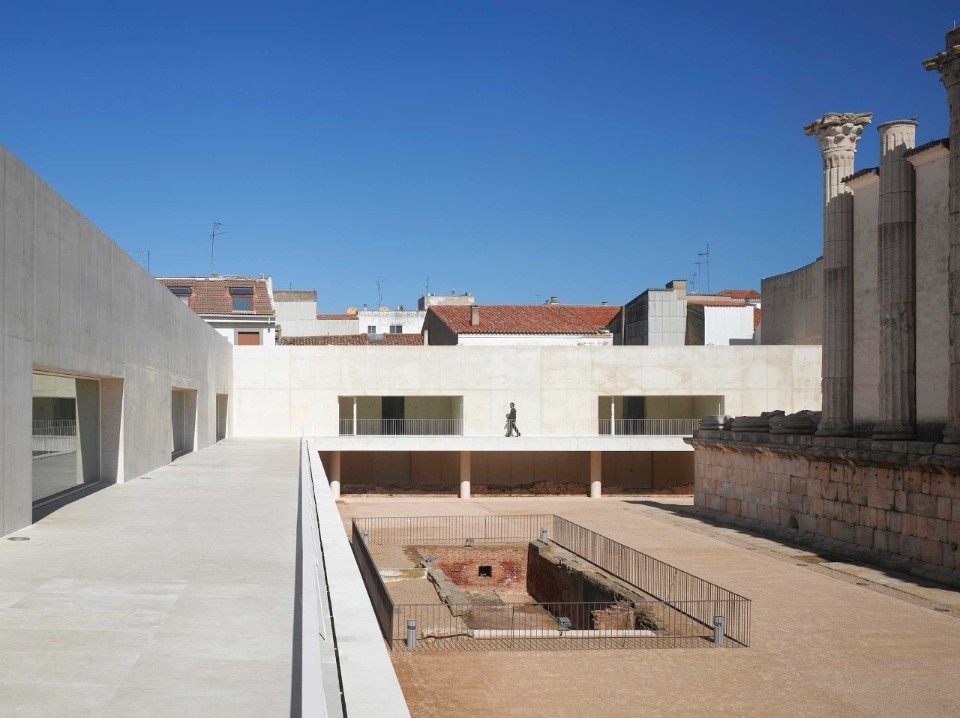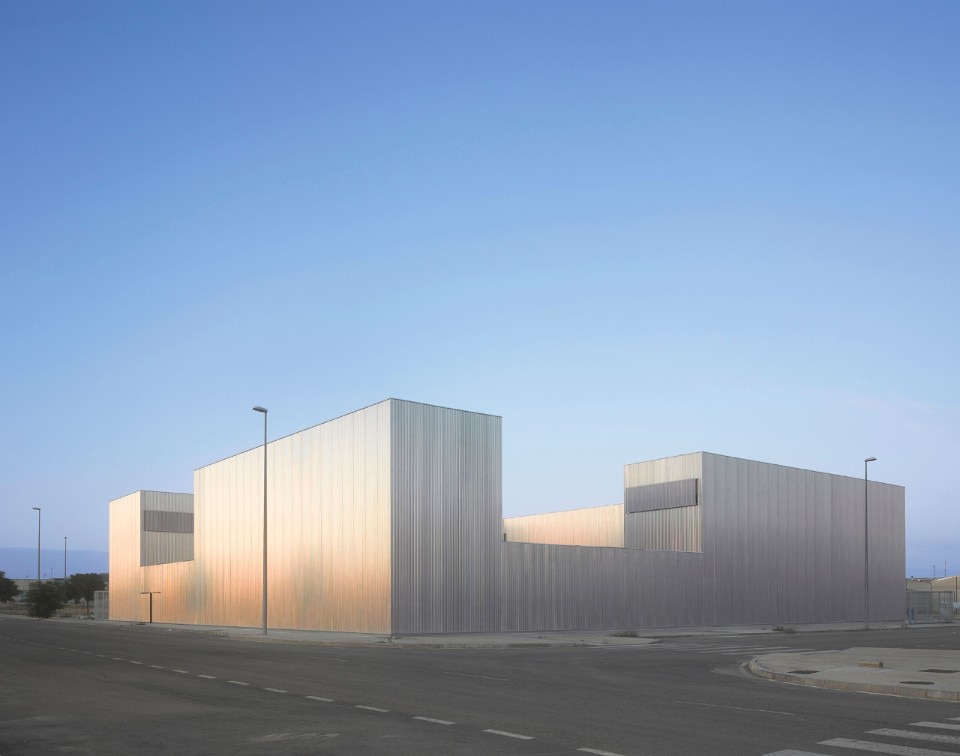José María Sánchez García (Don Benito, Badajoz, Spain, 1975) founded his studio in Madrid in 2006, and also runs a branch in Salorino, Switzerland. His interest in the natural and artificial environment lies at the base of his geometric additions to the landscape. Much of his work regards public buildings for sports, research and institutions. They express a respectful but not submissive dialogue with the context, resolved with a clear, evident mark that encompasses and unites with the qualities of the surroundings.
See The Ring (2009), a research and development centre for sports technology located on a peninsula in the Gabriel y Galán reservoir in Cáceres, where there are seasonal variations of the water level. Slender pillars raise the ring by 1 to 4.5 metres, depending on the different heights of the terrain. A continuous facade of irregularly alternating solids and voids is built from prefabricated elements and standard steel profiles, traditionally used for factories in these parts.
The reconstruction of the archaeological site of the Roman temple for Diana (2011) in Mérida is based on lost traces and existing ones from the Roman era. It stitches together the urban layout that used to be the backdrop of the temple. The insertion of a cultural building with multifunctional contemporary spaces is laid out in a C-shape positioned along the site’s perimeter to reinstate the empty piazza that existed in Roman times. At the same time, it redefines the boundary with the city. A walkable platform lies at the same level as the temple’s podium, offering visitors a new relationship with the sacred building. The new part looks like a compact block of cement, almost like artificial rock that references the ancient building’s granite.
Industrial architecture is represented by José María Sánchez García’s Industria de montajes eléctricos (electrical assembly industry) in Don Benito, Spain, 2016. Here, he surpasses the rigidity of the traditional hangar by orchestrating a square ring of interlocking boxes laid out around a court that accommodates the circulation of big trucks. The volume of each 10-metre-tall side has a square chunk cut out, making the composition dynamic. JMSG covered the entirety with the micro-corrugated galvanised steel sheeting typically used for industrial constructions, making the block shimmer with luminosity.
José María Sánchez García
His interest in the natural and artificial environment lies at the base of his geometric additions to the landscape.
